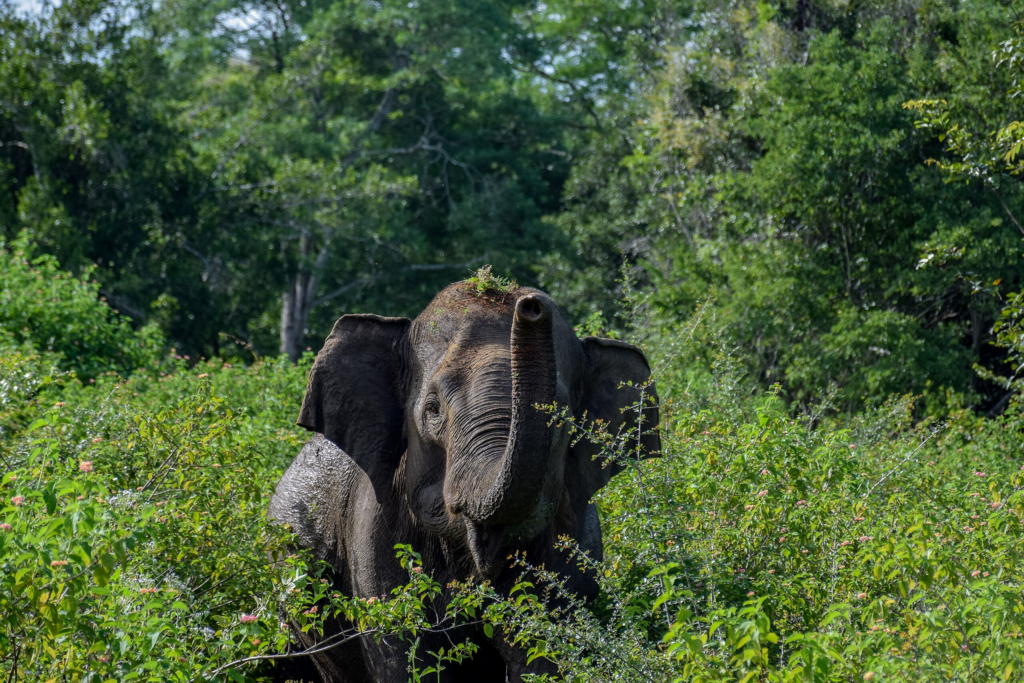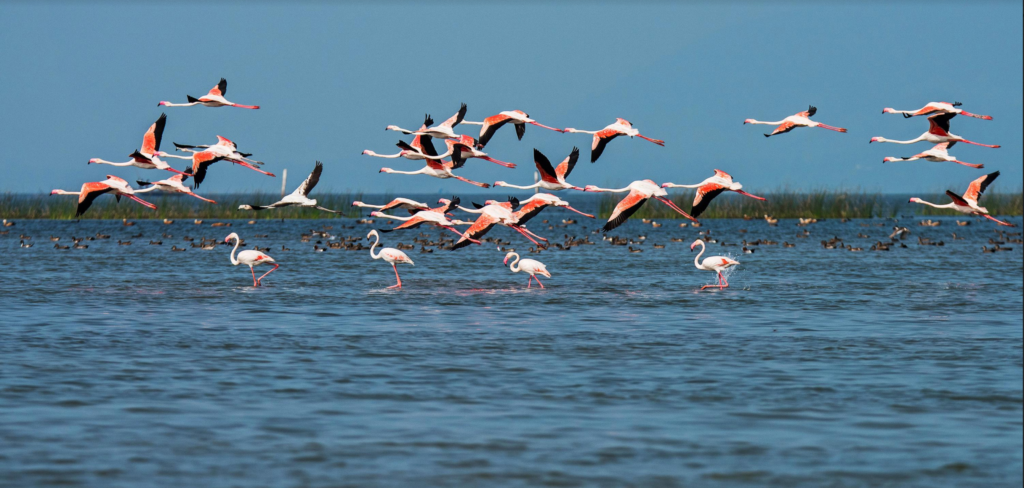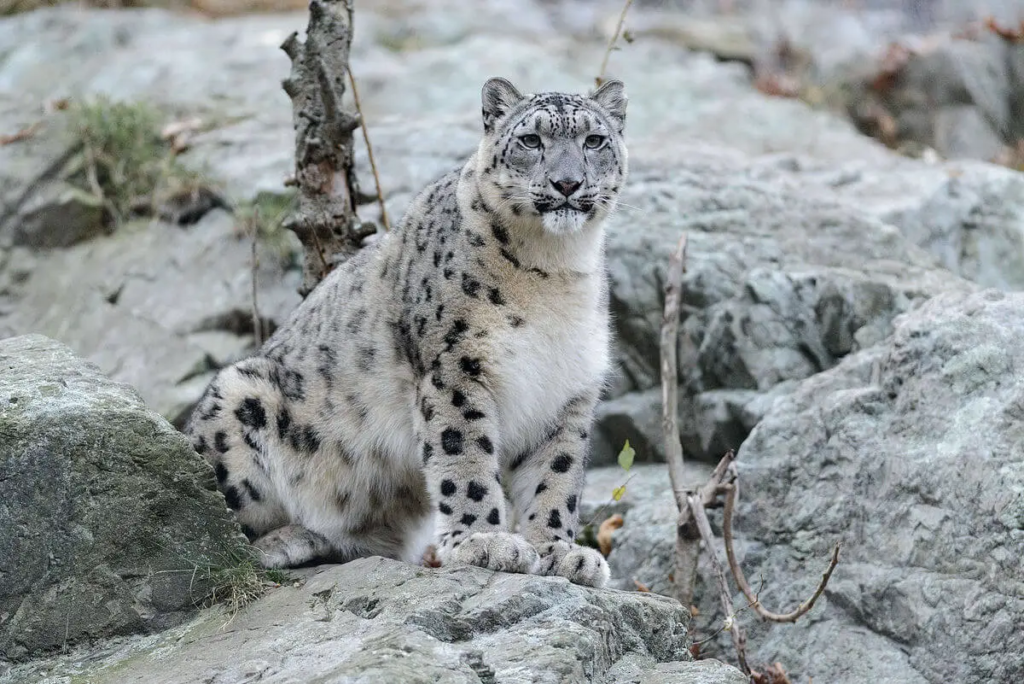Book Your Safari
Complete the form below to reserve your safari. Our team will confirm your booking and offer further details.
Complete the form below to reserve your safari. Our team will confirm your booking and offer further details.
Share your travel dreams, and we'll craft a personalised itinerary for you!
The quote provided is an estimate based on the information you supply. Final pricing may vary based on availability, changes in travel dates, and additional details.

South Asian national parks are a must-visit for anyone captivated by nature and wildlife. They offer unparalleled experiences, from spotting Bengal tigers in India to catching migratory birds in Sri Lanka. However, the key to an unforgettable trip is timing! This detailed month-by-month wildlife guide for the best South Asian national parks will help you plan your visit for the most spectacular sights and experiences.
Wildlife sightings are highly seasonal. Many species, such as tigers, rhinos, and elephants, are easier to spot during the dry months when they gather near water sources. Conversely, monsoon months bring lush greenery and migratory bird arrivals, creating a magical experience. This guide ensures you know when to visit the best South Asian national parks for specific wildlife and landscapes.

January ushers in dry and cool weather, which is perfect for wildlife viewing. In Ranthambore National Park in India, Bengal tigers are more easily spotted thanks to thinner vegetation. Similarly, Chitwan National Park in Nepal showcases one-horned rhinos and fascinating bird species drawn to the riverbanks.
Birdwatchers will find paradise in Kaziranga National Park, a UNESCO World Heritage Site, where migratory birds like Siberian cranes and pelicans gather. Discover more about Kaziranga’s significance on UNESCO’s website.

The dry weather in February makes it one of the best months to visit South Asian national parks. Bandhavgarh National Park in Madhya Pradesh is famous for its tiger sightings, while Yala National Park in Sri Lanka remains the go-to destination for leopards and sloth bears.
If you’re a photographer, this is also an excellent month to capture vibrant wildlife and natural landscapes. Check out Sri Lanka Tourism for travel ideas and conservation initiatives.

March is a transformative period in South Asian parks. Trees begin to shed their leaves, improving visibility for spotting animals like deer, langurs, and elephants. This is the best time to visit Jim Corbett National Park, India’s oldest national park, for a chance to see herds of elephants.
Additionally, Wilpattu National Park in Sri Lanka becomes a haven for birdwatchers as migratory species prepare to leave.

As temperatures begin to rise, wildlife becomes more concentrated around water sources, making it easier to spot elusive creatures. Kanha National Park in India is especially known for tiger sightings in April.
Meanwhile, Sundarbans National Park, the largest mangrove forest in the world and a UNESCO World Heritage Site, is home to Bengal tigers adept at swimming. Learn more about Sundarbans’ unique ecosystem on the UNESCO website.

May is a hot and dry month, but it offers exceptional wildlife viewing for those who can brave the heat. This is a prime time to visit Pench National Park, which inspired Rudyard Kipling’s The Jungle Book. Elephants, wild dogs, and leopards are often seen here.
In Nepal, trekking to Annapurna Conservation Area rewards adventurers with breathtaking landscapes and sightings of Himalayan wildlife like snow leopards and red pandas.

With the onset of the monsoon in southern regions, the lush green landscapes of Periyar National Park in Kerala offer a unique charm. The rains bring life to the forests, with baby animals like deer and elephants being common sights.
Sri Lanka’s Udawalawe National Park is another standout in June, famous for its large elephant herds.

July marks the height of the monsoon season in South Asia, and many parks close for conservation. However, certain parks, like Keoladeo National Park in Rajasthan, remain open. This UNESCO World Heritage Site is a haven for bird lovers, with sightings of pelicans, herons, and painted storks.
To learn about sustainable tourism practices in national parks, explore UNEP’s guidelines.

As the rains subside, August transforms many parks into lush green paradises. Kumarakom Bird Sanctuary in Kerala is bustling with activity, making it a hotspot for photography enthusiasts.
In Bhutan, Royal Manas National Park offers spectacular landscapes and sightings of species like the golden langur and pygmy hog.

September is a transitional period when the weather becomes more pleasant and animals start emerging from their monsoon hideouts. Gir National Park in Gujarat, home to the Asiatic lion, is a must-visit during this time.
Similarly, Horton Plains National Park in Sri Lanka boasts misty views and an array of endemic flora and fauna.

October is the gateway to the peak wildlife season across South Asia. The dry season begins in full swing, drawing animals out of dense vegetation. Ranthambore National Park is perfect for tiger sightings, while Manas National Park in Assam dazzles with its scenic beauty and diverse wildlife.
For a deeper dive into tiger conservation efforts, visit WWF’s official site.

November ushers in cooler temperatures and the arrival of migratory birds from across the globe. Chilika Lake in Odisha, Asia’s largest brackish water lagoon, becomes a paradise for birdwatchers.
In Pakistan, Deosai National Park offers stunning views of Himalayan landscapes and is home to the elusive Himalayan brown bear.

December wraps up the year with pleasant weather and vibrant wildlife activity. Hemis National Park in Ladakh, the largest national park in South Asia, is the place to spot snow leopards during this time.
Sri Lanka’s Bundala National Park is also remarkable, known for its flamingo migrations and crocodile sightings.
What is the best month to visit South Asian national parks?
The ideal month depends on the wildlife you wish to see. Winter months like January and February are excellent for tiger spotting, while November is best for birdwatching.
Are national parks in South Asia open year-round?
Not all parks are open year-round. Many close during the monsoon season (July–September) for conservation purposes.
What should I pack for a wildlife safari?
Essentials include lightweight clothing, comfortable shoes, binoculars, sunscreen, insect repellent, and a camera.
Is it safe to visit national parks in South Asia?
Yes, as long as you follow park guidelines, use experienced guides, and maintain a safe distance from wildlife.
How can I contribute to wildlife conservation during my visit?
You can contribute by choosing eco-friendly accommodations, avoiding littering, and supporting local conservation initiatives.
Which is the most biodiverse national park in South Asia?
Kaziranga National Park in India and Royal Manas National Park in Bhutan are among the most biodiverse parks in the region.
South Asian national parks offer a kaleidoscope of experiences throughout the year. Whether you’re tracking tigers in the dry season or watching migratory birds in winter, every month holds unique wildlife encounters. By planning your visit based on this month-by-month guide, you’re sure to create unforgettable memories while appreciating the beauty and diversity of South Asia’s natural world.